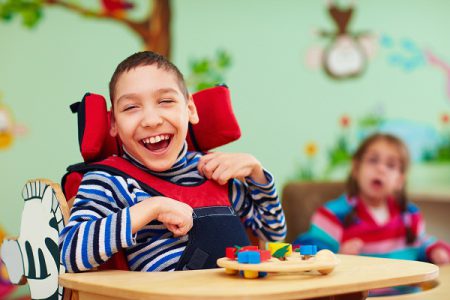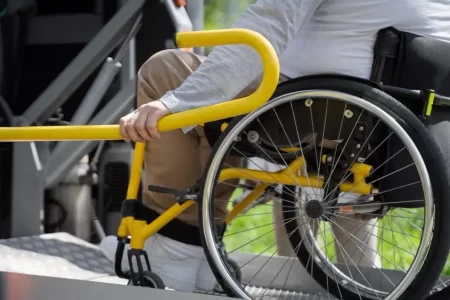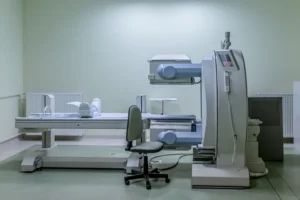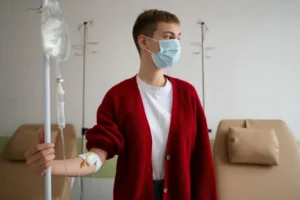Is Your Child a Suitable Candidate for Selective Dorsal Rhizotomy for Cerebral Palsy?
- Updated on: Jul 12, 2024
- 4 min Read
- Published on Feb 5, 2020
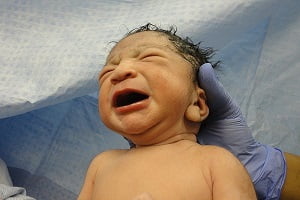
Cerebral palsy (CP) is a condition caused due to an injury to the brain before, during or after birth, which leads to impairment in control and movement. Children diagnosed with cerebral palsy face difficulties in controlling muscles and movements as they grow and develop.
What is Selective Dorsal Rhizotomy (SDR) Surgery?
Children suffering from cerebral palsy have spasticity in their lower limbs (spastic diplegia or diparesis) which results in muscular stiffness and pain. Spasticity occurs when the brain sends abnormal signals to the muscles.
A surgical procedure called selective dorsal rhizotomy (SDR) helps children suffering from lower limb spasticity due to cerebral palsy. SDR helps in reducing the lower limb spasticity by decreasing the number of abnormal signals. SDR procedure is not a cure for cerebral palsy but the surgery helps in reducing muscle stiffness.
Selective dorsal rhizotomy (SDR) surgery is an irreversible procedure and the changes caused due to it cannot be undone. Selective dorsal rhizotomy (SDR) surgery is a 4 to 5-hour procedure and involves the following:
- An incision into the upper lumbar spine
- Identification of the lower end of the spinal cord with the help of an ultrasound prod
- Opening of the membrane covering the spinal cord, and the lower end of the cord with the help of an operating microscope
- Identification of the sensory roots entering the lower end of the spinal cord with the help of an operating microscope
- Division of the sensory nerve roots into four or five rootlets
- Stimulation of the rootlets for identifying the ones responsible for spasticity
- Division of rootlets – the process is repeated for all the other nerve roots located on both sides, aiming to divide 50 to 70 percent of the sensory roots
- Closure of the spinal cord membrane
- Returning back of the muscles present in the back to their original position and closure of the skin with dissolvable stitches
Which Candidates are Suitable for Selective Dorsal Rhizotomy (SDR)?
Children belonging to the age groups of 3 to 10 years are the most suitable candidates for cerebral palsy, however, sometimes the older children may be suitable candidates as well. Children who are good at understanding and following directions and have a cooperative spirit are generally considered as ideal candidates for selective dorsal rhizotomy (SDR) procedure, as this procedure involves intensive follow-up therapy.
Researchers suggest that children between the age groups of 4 to 8 years with typical spastic diplegia will most benefit from selective dorsal rhizotomy (SDR) procedure. Besides, these children should also have:
- High level of spasticity in multiple muscles of both legs
- Spasticity that may affect their walking
- Tried many other treatments like botulinum toxin, casting, orthoses and have not received any sufficient positive improvement with these alone
- No abnormality of basal ganglia on MRI examination
- An active mode of mobility such as crawling or walking with or without an assistive device
- An ability to stand up and support their body
- An ability to hold their posture against gravity and walk
- Periventricular leucomalacia (PVL) because children having cerebral palsy due to PVL related to prematurity show a good response to SDR compared to cerebral palsy due to other reasons
- Good cognitive development and motivation
- Stability in their posture
- No fixed contractures i.e., permanent inability to move joints through a normal range of motion
Adults with cerebral palsy are considered as ideal candidates for SDR under the following conditions:
- If they are diagnosed with spastic diplegia
- If they have no fixed deformity or mild fixed deformities
- If they are highly motivated towards attending the intensive physical therapy and performing home exercise program
- If they have good muscle strength in the legs and trunk
- If they show evidence of adequate motor control
- If they have a history of delayed motor development
- If they show adequate motivation and ability to cooperate in therapy
Which Cerebral Patients are not Ideal Candidates for Selective Dorsal Rhizotomy (SDR)?
All the patients with spastic cerebral palsy (CP) are not benefitted with selective dorsal rhizotomy (SDR), especially the ones who suffer from some other conditions. CP candidates considered to be non-ideal for SDR include the following:
- Patients who have a history of any congenital brain infection like congenital hydrocephalus unrelated to premature birth, head trauma or familial disease
- Patients suffering from severe scoliosis
- Patients who have fewer chances of making functional gains after surgery
- Patients who have mixed cerebral palsy with major rigidity or dystonia
- Patients suffering from head trauma or having any familial disease (patients having a history of hereditary spastic diplegia are considered to be non-ideal for SDR)
- Patients having significant athetosis (involuntary writhing movements of the fingers, hands, toes, feet, arms, and legs or ataxia (lack of voluntary coordination of muscle movements)
- Patients who have an excessive weakness
- Patients who have undergone any previous major orthopedic surgery
- Patients having a significant fixed contracture
Advantages of SDR
SDR procedure has the following benefits:
- It decreases the need for surgeries of the hips and lower extremities
- Relieves the leg pain
- Improves function and movement of the upper body
- Improves sitting balance, longer stride length, and helps in easier walking
- Improves the walking pattern of the child
- Reduces the need for soft tissue surgery (muscle lengthening) in most of the cases
Complications Associated with SDR
Following may be some possible complications of SDR procedure:
- Paralysis of the legs
- Bladder paralysis
- Impotence
- Loss of sensation
- Wound infection
- Meningitis
- Spinal fluid leakage through the wound
- Development of spinal deformity
- Disk protrusion
- Spinal stenosis (an abnormal narrowing of the spinal canal, which can lead to neurological issues)





